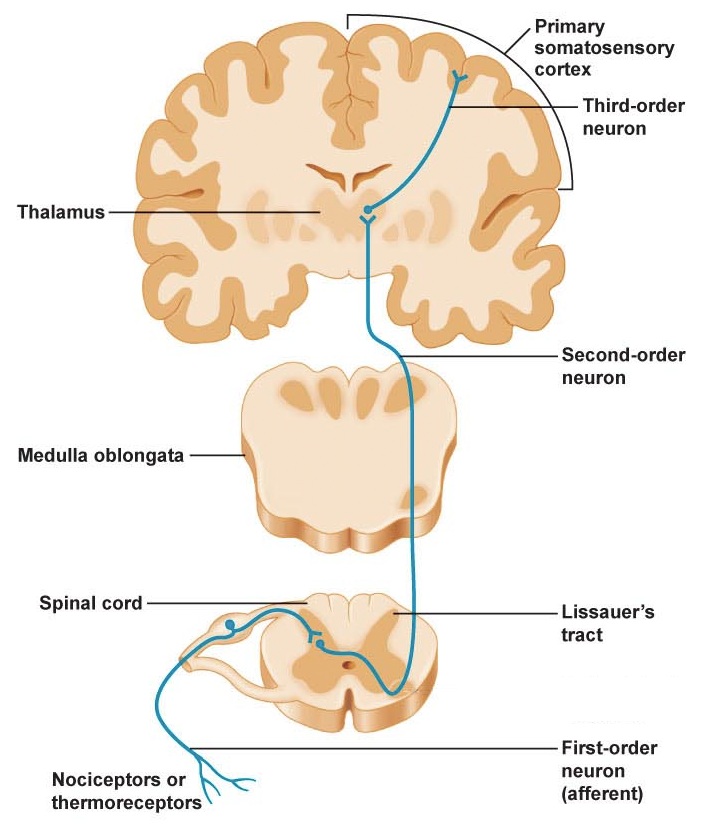Answer: Von Frey fibers are a neurophysiological examination tool used for determining mechanical pain threshold in humans and nonhumans.
Also called von Frey filaments or von Frey hairs, von Frey fibers are a diagnostic tool designed for examining pain threshold at different parts of the skin. They were developed by Maximilian von Frey in 1896. The von Frey filament itself is a long, thin elastic nylon tube. It is pushed directly into the skin at a right angle. When a certain amount of pressure is applied, the von Frey fiber will buckle. Once the filament buckles, further application of pressure will not transmit any further force to the skin.
There are several von Frey fibers in each set. Each one is calibrated for a certain amount of force before it buckles. The force required before buckling is related to the diameter of the von Frey hair - the larger the diameter, the higher the force that must be applied before the filament buckles. Often times, that force ranges from .008 grams to 300 grams.
They are used as a diagnostic or assessment tool for examining pain threshold at the skin surface. A person with a high pain threshold will not respond to the low force fibers, as they do not perceive them as painful. However, someone with a low pain threshold may react to the low force fibers with a painful response such as withdrawal of the hand or by saying that the stimulus hurts. Because an experimenter is able to test a whole range of responses, the von Frey fibers are a useful diagnostic tool.
For example, people with allodynia, a condition that causes innocuous stimuli to be perceived as painful, have a very low pain threshold. They would withdraw their hand following the application of a low force von Frey filament. A related state is called hyperalgesia, when a person is more sensitive to painful stimuli, will result in withdrawal after application of a lower force fiber. On the other hand, a person with congenital insensitivity to pain would have a very high pain threshold, and would only respond to the high force von Frey filaments.
Recently, an electronic version of the von Frey hairs has been developed and tested in an animal model of chronic pain (Measuring Changes in Tactile Sensitivity in the Hind Paw of Mice Using an Electronic von Frey Apparatus). The electronic version provides a more objective and less disruptive method for analyzing pain threshold in animal models.
Several vendors make their own version of the von Frey pain threshold test, including Bioseb.
Animal tests using von Frey fibers
The von Frey test can also be performed on animals, such as rats and mice. In these experiments, a scientist would hold the paw of the rat or mouse, then press different stiffness von Frey fibers into the palm until the animal withdraws the paw. These animal studies are useful for answering several different types of questions, such as:
What are the cellular mechanisms behind congenital insensitivity to pain (CIP)? It has been demonstrated that a mutation that appears in CIP is related to the voltage-gated sodium channels. (Nav1.7 is required for normal C-low threshold mechanoreceptor function in humans and mice)
What novel drugs may be useful for helping people with chronic or neuropathic pain? New chemicals can be tested to see if they are useful in decreasing pain among animals with artificial pain conditions. As an example of how von Frey fibers can be used to answer this type of research question, see (Effect of Immature Rubus occidentalis on Postoperative Pain in a Rat Model)
Are different anesthesia protocols better? For example, the von Frey fibers can be used in veterinary medicine (Clinical and Antinociceptive Effects of Distal Inferior Alveolar Nerve Block in Ponies With Tramadol 5% or Lidocaine 2).









